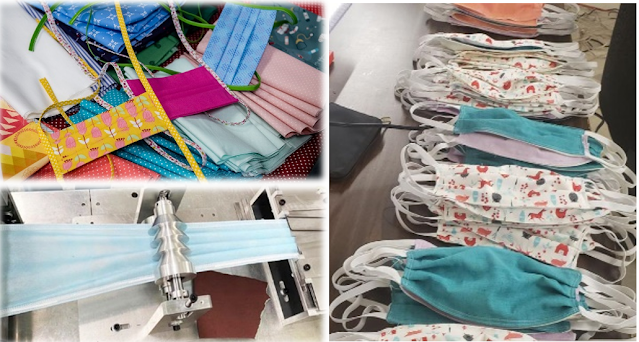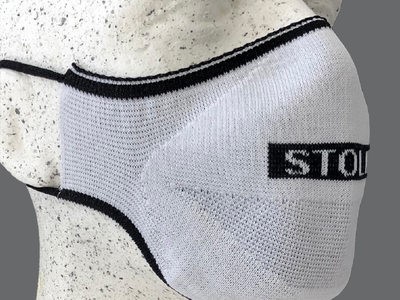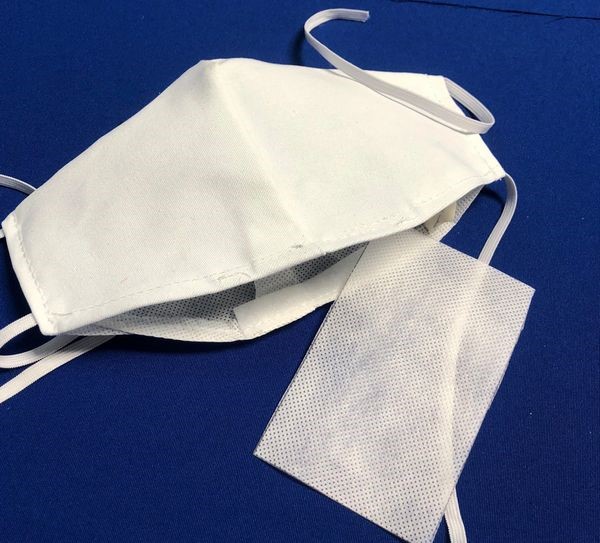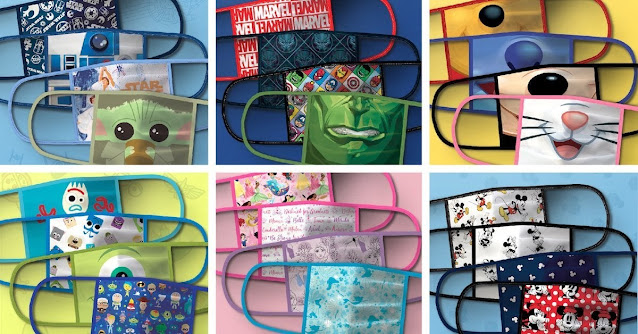Author: Dipanwita Ray
In order to reduce community transmissions, controlling the spread of infection at the source is a well-established strategy and for this, the government needs the support of every individual. Many nations around the world have made masks compulsory when an individual steps out of their houses. Mass use of disposable surgical and N95 masks would cause a serious concern of their global shortage for health care facilities. Thus, the US CDC recommends that healthy people make use of cloth face cover in public. Cloth masks are a simple, economic, and sustainable alternative to surgical masks for controlling the spread at the source.
Fabrics that are used in mass-scale mask manufacturing and for do-it-yourself (DIY) masks are mentioned in this article. Facemask materials need to be such that they are effective in filtering particles as well as offer breathability to the wearer.
Fabrics that are used in mass-scale mask manufacturing and for do-it-yourself (DIY) masks are mentioned in this article. Facemask materials need to be such that they are effective in filtering particles as well as offer breathability to the wearer.
 |
| Figure 1: Facemask for Community Use |
1. Woven Fabric
Woven fabric with a tight weave can provide a partial barrier to virus-containing droplets. Various woven fabric materials are suitable for making cloth facemasks such as- cotton, cotton blend, flannel, polyester, chiffon, silk, satin, and linen. Proper fit and size is a key factor to ensure effectiveness. For masks made out of woven materials, the construction of the facemask is important such that the nose and mouth are covered and entry of air is allowed only through the mask. Masks made from these materials are reusable and washable.1.1 Cotton: A 100 percent cotton fabric with a high thread count is the most preferred and commonly used for a cloth facemask. A cotton bandana material is not very effective, but a 600-thread count fabric can provide average filtration efficiencies of 79 ± 23% (particles in the 10 nm to 300 nm range). By including multiple layers of fabric, the effectiveness slightly increases.
 |
| Figure 2: Face masks made of 100% cotton fabric |
1.2 Flannel: Cotton as an outer layer with flannel as inner layers and cotton quilt with cotton-polyester batting also works well. The highly tangled fibrous nature of the batting aids in the superior performance at small particle sizes.
 |
| Figure 3: Cotton Facemask with Flannel |
1.3 Chiffon and Silk: For Do-it-Yourself (DIY) masks, fabric material such as cotton, natural silk, chiffon can be used from apparel & accessories available at home. These fabrics with a tight weave can provide good protection and they typically have a filtration efficiency above 50% for particles in the range of 10 nm to 6.0 μm. Chiffon and natural silk gain charge and serve as an electrostatic barrier for filtration. A combination of cotton with silk or chiffon has much better effectiveness.
1.4 Material Combination: The use of a combination of fabrics is more advantageous due to a double barrier with mechanical and electrostatic based filtration. Based on the findings of a study to assess the filtration efficiencies of various types of commonly available fabrics for cloth face mask suggest that a cloth mask made of a tightly woven cotton fabric with two sheets of chiffon (made from polyester and spandex) seemed to be effective in filtering out 80-99% of the particles, depending on their size.
 |
| Figure 4: Aerosol filtration through fabric combination |
2. Knitted Fabric
Knitting technology providers have commercialized knit fabric facemasks that are manufactured in one piece. For DIY masks, knitted fabric from cotton t-shirts is a suitable material. Improper fitting of facemask due to the counter of the face will affect its efficiency. Stretch knit fabric can be used to make masks that fit the face snugly without being uncomfortable. |
| Figure 5: Knitted Facemask | Image Credit: www.karlmayer.com |
Knit masks are commonly made of cotton and have an additional filter material such as HEPA grade fabric, PM 2.5 activated carbon filters for better effectiveness.
Masks made of fabric containing 74% viscose, 25% polyester, 3% lycra blend have also been manufactured. The use of these materials gives a super soft and comfortable feel to the knitted that retains shape and counters to the face. Learn more about Viscose Fabrics
3. Non-Woven Fabric
Medical masks and filters are made of non-woven fabric, which has better bacteria filtration and air permeability. The non-woven fabric in medical masks is either sandwiched between a cotton-free absorbent gauze or is the surface material with a layer of filter paper in between. Disposable procedural 3-ply facemasks contain an inner soft absorbent cellulose non-woven fabric, a middle melt-blown polypropylene material that acts as a filter and an outer hydrophobic non-woven fabric. The 3-ply mask is made of cellulose, melt-blown polypropylene, and polyester. Disposable surgical facemasks are usually made of spun-bond polypropylene outer and cellulose or thermal bonded polypropylene inner. The outer material in N95 masks could be made of spun-bond polypropylene or cellulose, while the materials in the inner layer could include cellulose, thermal bonded polypropylene, or spun-bond polypropylene. |
| Figure 6: Materials in a Surgical Mask |
 |
| Figure 7: Materials in an N95 Mask | Image Credit: shopdmg.com |
Filter interlayers in cloth masks include coffee filters, paper towels, HEPA filter, melt-blown polypropylene. These materials come handy as filter materials for DIY masks as well.
 |
| Figure 8: Facemask with Filter | Image Credit: https://shoparmorbags.com |
4. Facemasks by Brands
Many fashion brands and designers have dived on into making facemasks and launched their lines that are available for sale, offered complimentarily, and also being distributed to the ones who cannot afford it. These masks, commonly made of cotton fabric and some lined with silk, are not only protective but also stylish. Fabric from the manufacturers’ stockpile or waste fabrics are being used. Corporations have developed masks with innovations in materials and finishes. Some of these are – a facemask with deodorising and antibacterial effects that can be washed up to 50 times, use of traditional Japanese paper, denim fabric, masks made of skin-fitting materials used in wetsuits for surfing and diving which have holes near the nose and mouth only, and use of silver nanotechnology and coffee for antibacterial and biodegradable filters, etc.Thus, with facemasks now becoming an essential, brands/ corporations are not leaving any stone unturned in launching facemasks with unique design aesthetics and innovative materials.
 |
| Figure 9: Disney's Line of Reusable Masks | Image source |
References:
- Konda, A. et al., 2020. Aerosol Filtration Efficiency of Common Fabrics Used in Respiratory Cloth Masks. ACS Nano, 14(5), pp. 6339-6347.
- https://www.cdc.gov/coronavirus/2019-ncov/prevent-getting-sick/diy-cloth-face-coverings.html
- https://erj.ersjournals.com/content/early/2020/04/27/13993003.01260-2020#ref-14
- https://www.medicalnewstoday.com/articles/what-material-is-best-for-homemade-masks#How-well-the-mask-fits-is-also-crucial
- https://www.mitsufuji.co.jp/en/information/hamonagmask_20200317/
- https://mainichi.jp/english/articles/20200413/p2g/00m/0fe/081000c
